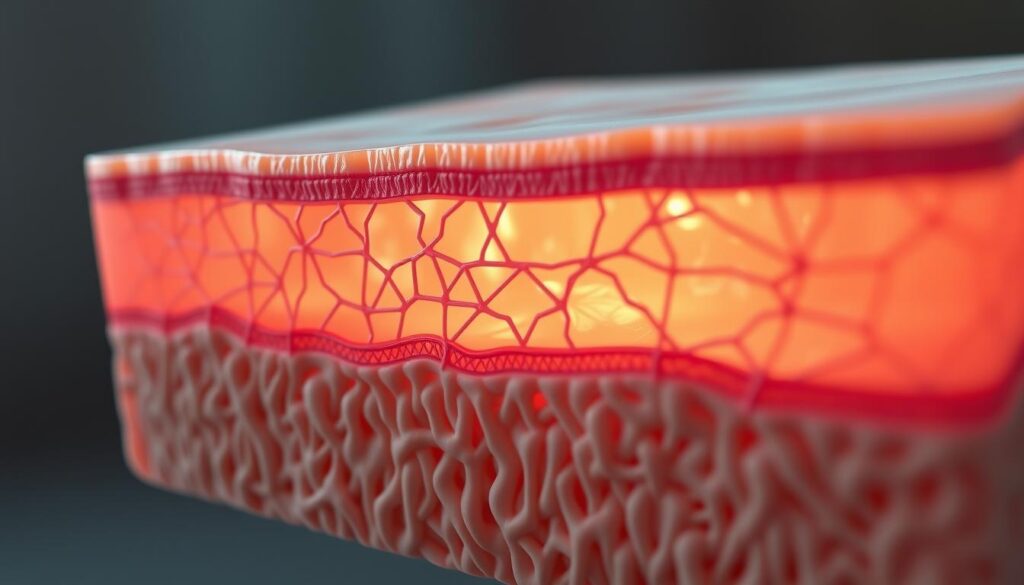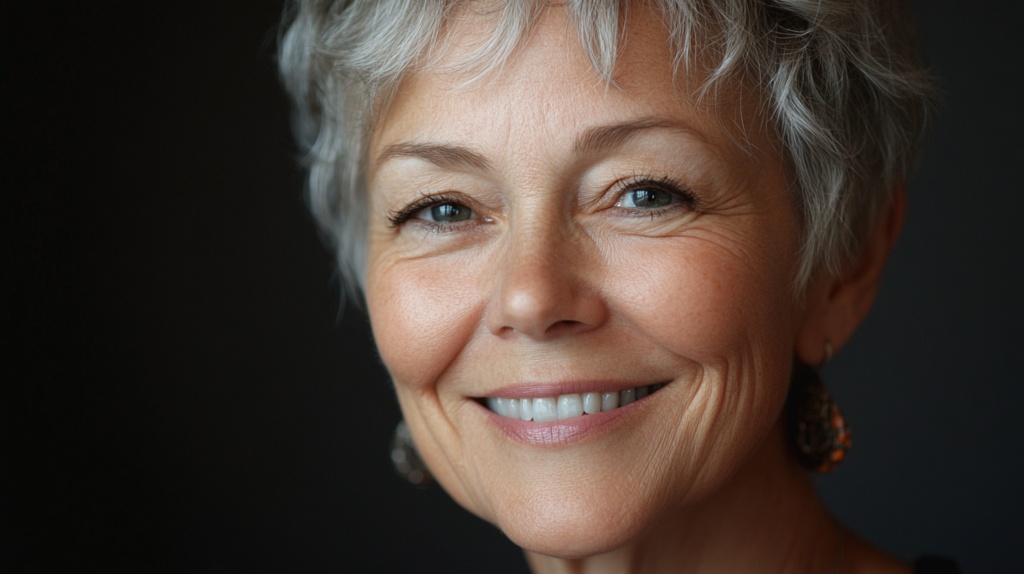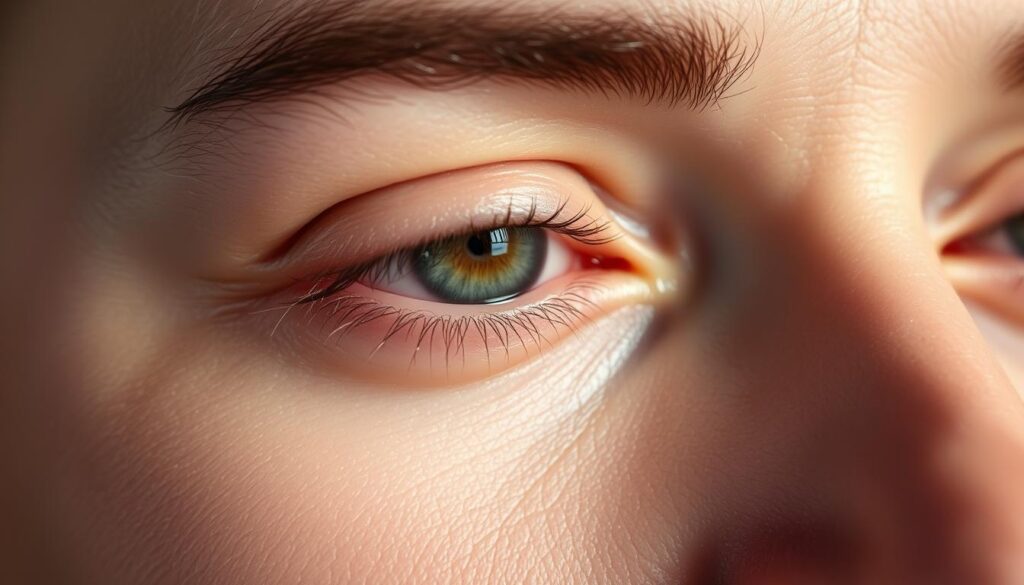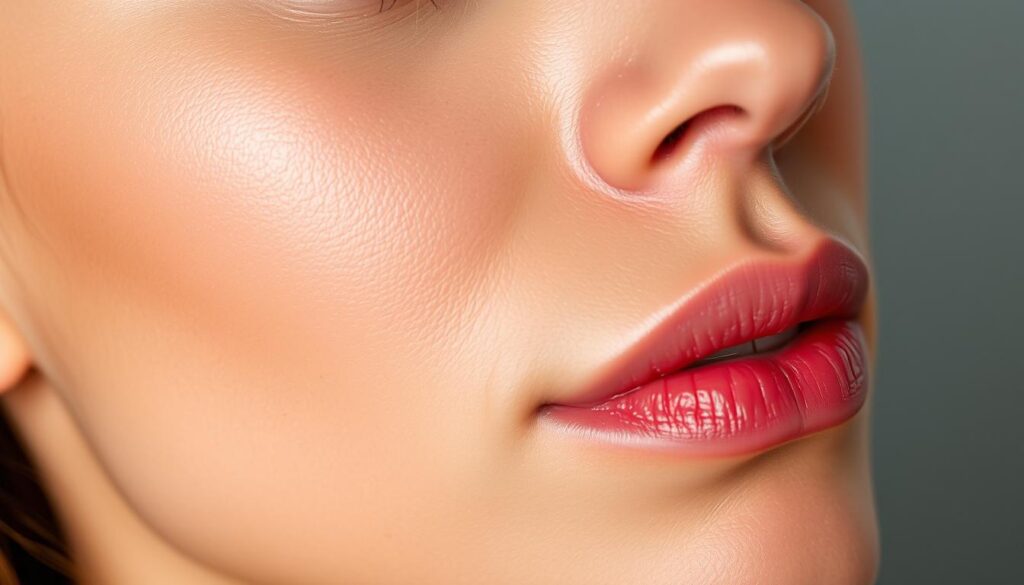Many people notice changes in their skin as they grow older. This can affect how they feel about their appearance and self-confidence. One common concern is the loss of firmness, which often occurs naturally with aging or after significant weight loss1.
Factors like sun exposure and lifestyle choices also play a role. Over time, these can break down collagen and elastin, the proteins that keep your body looking youthful2. Understanding the cause of these changes is the first step toward finding effective treatment options.
Whether you’re exploring lifestyle adjustments or considering professional procedures, there are ways to address this concern. Let’s dive into the details to help you regain confidence and a firmer look.
Understanding Sagging Skin
As you grow older, you might notice a shift in how your body looks and feels. One common change is the appearance of loose skin, which often results from a loss of elasticity. This happens when your body produces less collagen and elastin, the proteins responsible for keeping your skin firm and youthful3.
What is Sagging Skin?
Sagging skin refers to areas that appear less firm or droopy. It’s most noticeable in places like the face, neck, arms, and abdomen. Over time, your skin’s ability to bounce back decreases, leading to these visible changes4.
Common Causes: Aging, Weight Loss, and Sun Exposure
Several factors contribute to this condition. Aging is the most significant, as collagen production decreases by about 1% each year after age 204. Significant weight loss can also stretch the skin, making it harder to regain its original shape. Additionally, prolonged sun exposure accelerates the breakdown of collagen and elastin, leading to premature aging5.
| Cause | Impact |
|---|---|
| Aging | Reduced collagen and elastin production |
| Weight Loss | Stretched skin loses elasticity |
| Sun Exposure | Breaks down collagen and elastin |
Understanding these causes is the first step toward addressing the issue. Whether it’s through lifestyle changes or professional treatments, there are ways to improve your skin’s appearance and feel more confident.
The Science of Skin, Collagen, and Elastin
The foundation of your skin’s health lies in its natural proteins. These components work together to keep your body looking youthful and resilient. Let’s explore the roles of collagen, elastin, and hyaluronic acid in maintaining your skin’s structure and appearance.

The Role of Collagen in Maintaining Firmness
Collagen is the most abundant protein in your body, making up about 30% of its total protein content6. It provides structure and firmness, helping your body maintain a smooth, youthful appearance. However, collagen production declines by about 1% each year after age 207. This reduction leads to visible changes like wrinkles and loss of firmness.
Studies show that supplements containing collagen peptides can improve hydration and elasticity, maintaining skin thickness and density7. Including collagen-rich foods in your diet, such as bone broth and fish, can also support your body’s natural production.
Elastin and Its Impact on Skin Elasticity
Elastin is another essential protein that allows your skin to stretch and bounce back. It works alongside collagen to maintain elasticity and resilience. Over time, factors like sun exposure and aging can break down elastin, leading to a condition called elastosis8.
Protecting your body from UV rays and avoiding smoking can help preserve elastin. Topical treatments like retinol and vitamin C have also been shown to replenish elasticity and reduce signs of aging8.
Hyaluronic Acid: Moisture and Volume in Your Skin
Hyaluronic acid is a molecule that holds up to 1,000 times its weight in water, keeping your body hydrated and plump7. It diminishes with age and UV exposure, but it can be replenished through supplements or topical applications.
Research indicates that combining hyaluronic acid with collagen in nutritional drinks can significantly improve elasticity and hydration8. This combination helps restore volume and reduce the appearance of fine lines.
| Component | Function |
|---|---|
| Collagen | Provides structure and firmness |
| Elastin | Allows skin to stretch and bounce back |
| Hyaluronic Acid | Retains moisture and adds volume |
Understanding these components can help you make informed choices about your skincare routine. Whether through diet, supplements, or treatments, supporting your body’s natural proteins is key to maintaining a youthful appearance.
Lifestyle Remedies and At-Home Solutions
Your daily habits play a key role in maintaining a youthful look. Simple changes in your routine can help you feel more confident and address changes naturally. Let’s explore practical, at-home solutions that can make a difference.
Exercise and Facial Workouts for Toned Skin
Regular physical activity is one of the best ways to improve your appearance. Resistance training builds muscle, which can help tighten areas that may appear loose. Studies show that combining cardio with strength training enhances overall tone9.
Facial workouts, like face yoga, can also be effective. These exercises target specific areas, such as the jawline and neck, to improve elasticity. Research suggests that six 20-minute sessions per week can lead to visible changes in just two weeks9.
Skincare Products and Firming Creams
Using the right product can make a noticeable difference. Look for creams and serums that contain ingredients like retinol, hyaluronic acid, and peptides. These components stimulate collagen production and improve hydration10.
Natural options, such as egg white masks, can also enhance resilience and hydration. They’re an easy, affordable way to promote a firmer look9.
Supplements and Healthy Diet Practices
What you eat matters just as much as what you apply. A diet rich in antioxidants, vitamins, and minerals supports your body from the inside out. Collagen supplements, for example, can improve elasticity and hydration10.
Incorporate foods like dark chocolate, which contains cocoa flavanols, to boost elasticity. Staying hydrated is also crucial for maintaining a plump, youthful appearance9.
| Remedy | Benefits |
|---|---|
| Exercise | Builds muscle, improves tone |
| Skincare Products | Stimulates collagen, hydrates |
| Supplements | Supports elasticity, hydration |
By incorporating these practices into your routine, you can take care of your body in a holistic way. Small changes can lead to big results over time.
Medical and Minimally Invasive Treatments
Modern advancements in dermatology offer effective ways to address loose skin. Whether you’re looking for non-surgical solutions or considering more intensive methods, there are options tailored to your needs. Let’s explore the professional treatments available today.
Non-Surgical Procedures: Laser and Ultrasound Treatments
Non-surgical methods are popular for their ability to tighten and rejuvenate without significant downtime. Laser treatments, such as Thermage®, use radiofrequency energy to stimulate collagen production, resulting in immediate visible improvements11. Initial results may appear right away, with continued enhancement for up to six months12.
Ultherapy® is another FDA-cleared procedure that lifts and tightens areas like the neck, chin, and décolletage11. This method uses ultrasound energy to target deeper layers, promoting natural collagen renewal. Most patients see noticeable changes after just one session.
Other minimally invasive options include microneedling and chemical peels. Microneedling, or collagen induction therapy, smooths and tightens with minimal recovery time. Patients typically need three sessions spaced one month apart for optimal results12.
Surgical Options for Severe Sagging
For more significant concerns, surgical methods provide long-lasting results. Procedures like body contouring remove excess tissue and reshape areas like the abdomen, arms, and thighs. These surgeries are ideal for addressing severe sagging caused by weight loss or aging11.
While surgical options offer dramatic improvements, they come with risks such as infection and scarring. Recovery time is generally longer compared to non-invasive treatments, but the results are often permanent11.
Whether you choose a non-surgical or surgical approach, consulting with a qualified professional ensures you receive the best treatment for your unique needs. Understanding the benefits and recovery times helps you make an informed decision.
Sagging Skin: What Causes It and How to Firm It Up
Your body’s appearance is influenced by a variety of factors, each playing a unique role in how it changes over time. Understanding your specific condition is the first step toward finding effective solutions. Every person has different needs, depending on genetics, lifestyle, and environmental exposure13.
Start by reflecting on which area of your body is most affected. Is it your face, neck, arms, or abdomen? Identifying the specific area helps you focus on tailored treatments. For example, gradual weight loss allows collagen and elastin time to retract, minimizing changes in elasticity14.
Various factors contribute to these changes. Genetics play a role, but lifestyle choices like smoking or sun exposure can accelerate the process. Smoking decreases collagen formation, while high sugar diets create Advanced Glycation End products (AGEs) that prevent collagen renewal13.
Keeping track of changes over time can help you determine the effectiveness of remedies. For instance, radiofrequency therapy shows improvement in tone and firmness within six months, with results lasting up to three years14. Consulting a professional ensures you choose the right treatment for your unique needs.
Remember, your condition is unique. Whether it’s through lifestyle adjustments, skincare products, or professional treatments, a personalized approach yields the best results. Take the time to assess your challenges and explore solutions that work for you.
Conclusion
Addressing changes in your body’s appearance starts with understanding the underlying factors. Aging, fluctuations in weight, and sun exposure are key contributors to reduced elasticity15. Recognizing these causes helps you choose the right solutions for your unique needs.
From lifestyle adjustments like hydration and exercise to advanced treatments such as radiofrequency therapy, there are options for every concern16. A holistic approach—combining healthy habits with professional care—yields the best results.
If these changes affect your confidence, consulting a specialist can guide you toward the most effective plan. Taking action today can help you feel more comfortable and confident in your body.



